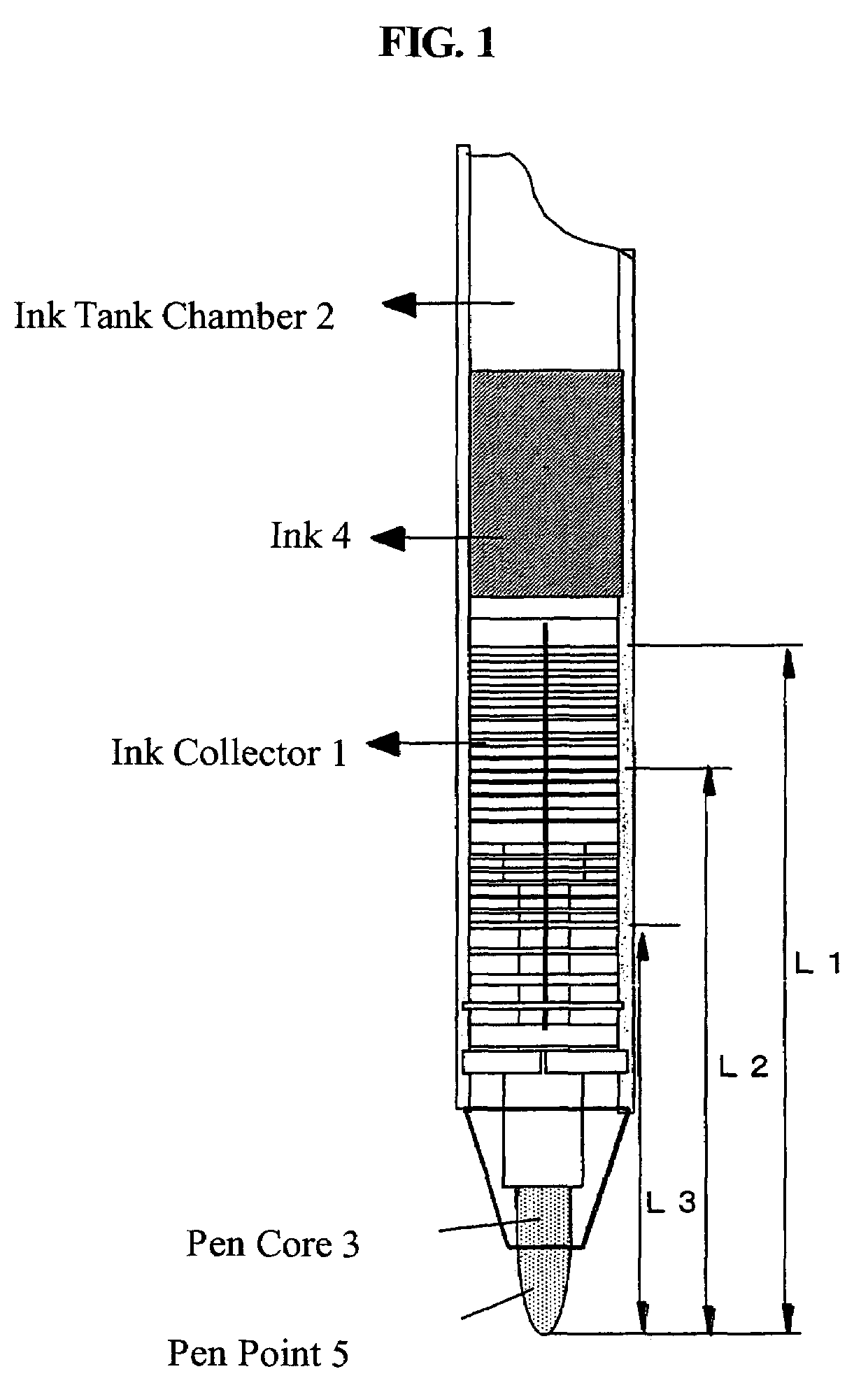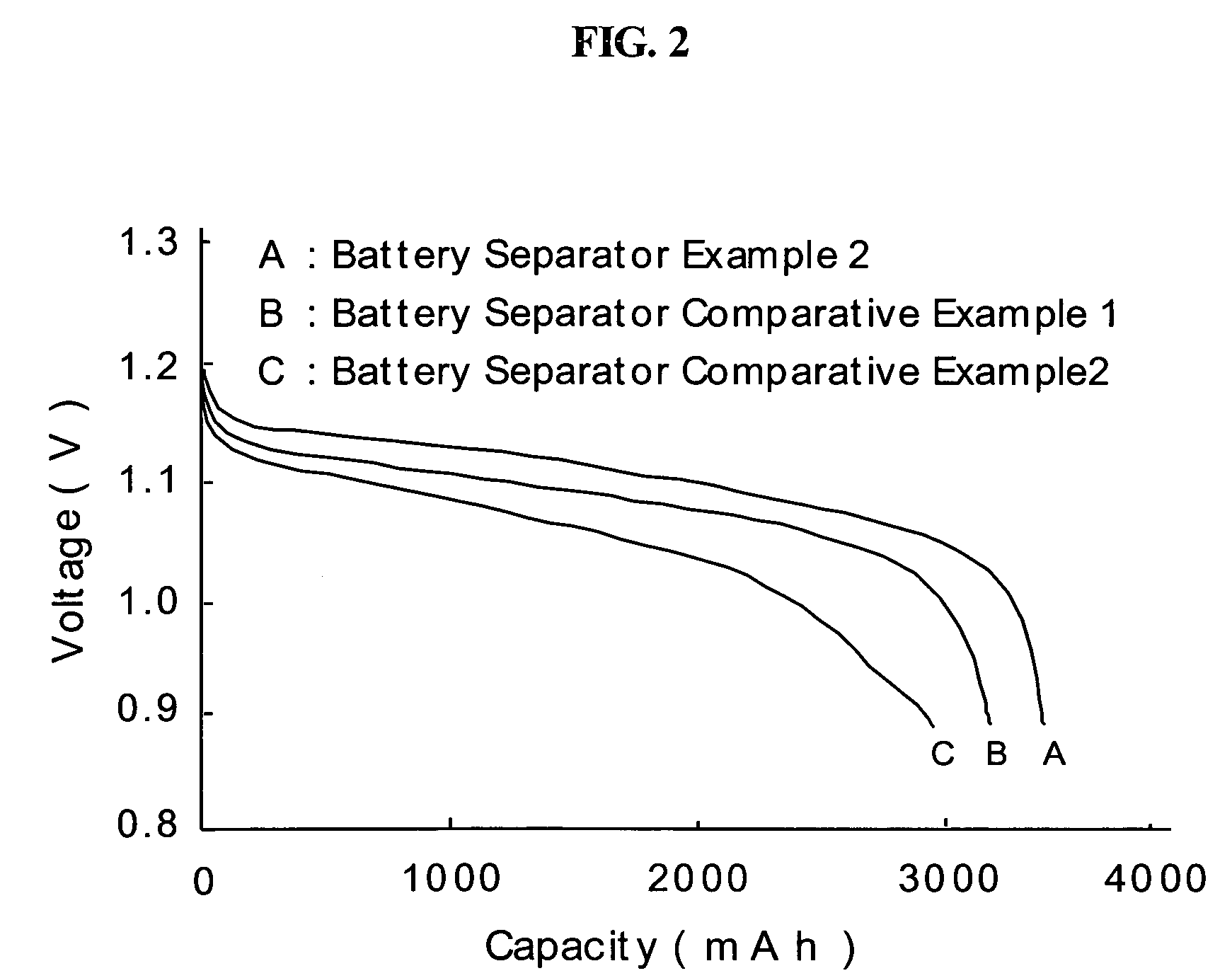Method of modifying polymeric material and use thereof
a polymer material and property technology, applied in the field of modifing the property of polymeric materials, can solve the problems of small low hydrophilic property and difficulty in chemical modification, and inability to obtain the material which absorbs water as much as several times of the original weight of the material, etc., to achieve no durability to washing, strong water resistance, and not easily broken
- Summary
- Abstract
- Description
- Claims
- Application Information
AI Technical Summary
Benefits of technology
Problems solved by technology
Method used
Image
Examples
example 11
[0216]A PP film of Sample 11 (a weight, 0.38 g and a size, 15 cm×15 cm) was immersed in Impregnant C (100 ml ) for 10 minutes at 70. ° C. as an impregnation process. Then, the specimen was rinsed with methanol and the waste of the impregnant was wiped off with a paper and dried for 5 minutes at room temperature. Then, the specimen was made by an plasma treatment for 30 seconds at 30° C. as the activation step. Subsequently, the monomer grafting by the UV irradiation similar to Example 1 was carried out using 180 ml of water, 20 mg of AIBN and 1.0 ml of acrylic acid.
example 12
[0220]A Method to Give Hydrophilic Property to Carbon Fiber and its Use for Composite
[0221]Carbon fiber (6.0 g) of Sample 9 in Table 1 was used as a specimen. The specimen was immersed in methanol for 30 minutes at 50° C. as the impregnation process. Then, the treated specimen was centrifuged for one minute at a rate of 800 rpm. Then, the specimen was put in a hard glass vessel with 1.5 mm thick. The ozone was regenerated as follows; oxygen was introduced into an ozone-regenerator with a flow rate of 100 ml / min and ozone with a concentration of 40 mg / L was regenerated. The ozone was introduced in the reaction vessel for 30 minutes at 20° C., and subsequently, ozone-free oxygen was introduced in the vessel for 10 min. Then as the monomer grafting step, the treated specimen was put in a glass-made reaction vessel and acrylic acid 1.2 ml, water 200 ml and methanol 5 ml were added in it. The same UV irradiation to the reaction vessel as described in Example 1 was carried out for three h...
example 15
[0231]Water Absorption Test
[0232]Treated or untreated wool fiber fabrics were floated on the surface of water, keeping the thin direction of the specimen parallel to the surface. The time for the specimen absorbed water to sink was observed. The short time indicates a high hydrophilic property. The time observed for an untreated wool fiber fabric was 60 minutes. The time observed for the wool fiber fabric treated in Example 14 was one second and those observed for the wool fiber fabrics obtained by Comparative Examples 37, 38 and 39 were 15 seconds, 28 seconds and 30 seconds, respectively.
PUM
| Property | Measurement | Unit |
|---|---|---|
| thickness | aaaaa | aaaaa |
| pore size | aaaaa | aaaaa |
| fiber diameter | aaaaa | aaaaa |
Abstract
Description
Claims
Application Information
 Login to View More
Login to View More - R&D
- Intellectual Property
- Life Sciences
- Materials
- Tech Scout
- Unparalleled Data Quality
- Higher Quality Content
- 60% Fewer Hallucinations
Browse by: Latest US Patents, China's latest patents, Technical Efficacy Thesaurus, Application Domain, Technology Topic, Popular Technical Reports.
© 2025 PatSnap. All rights reserved.Legal|Privacy policy|Modern Slavery Act Transparency Statement|Sitemap|About US| Contact US: help@patsnap.com


